KIA Niro: Water Temperature Control Assembly
Kia Niro - First generation - (DE) (2017-2022) - Service and Repair Manual / Engine Mechanical System / Cooling System / Water Temperature Control Assembly
Removal and Installation
Water Temperature Control Assembly
- Disconnect the battery negative terminal.
- Loosen the drain plug, and drain the engine coolant. Remove the
reservoir cap to help drain the coolant
faster.
(Refer to Cooling System - "Coolant")
- Remove the air cleaner assembly.
(Refer to Intake and Exhaust System - "Air Cleaner")
- Disconnect the radiator upper hose (A).
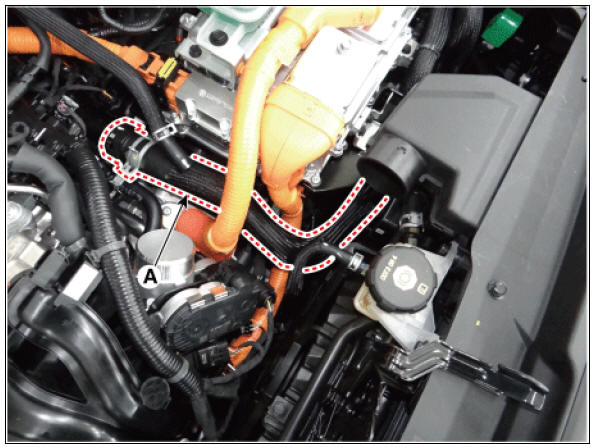
- Disconnect the heater hoses (A).
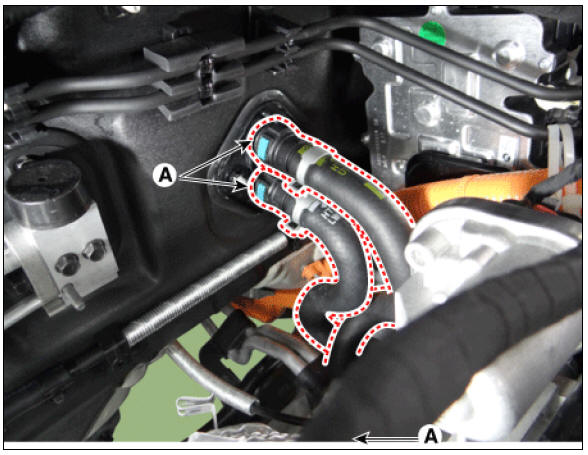
- Disconnect the wiring connectors and harness clamps and remove the connector brackets around the water temperature control assembly.
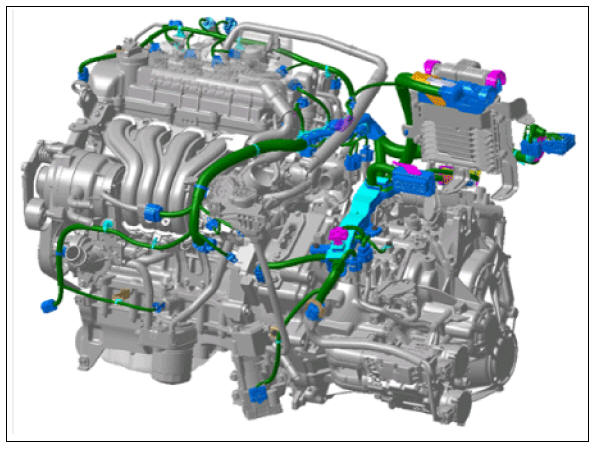
- Disconnect the degassing hose (A) and EGR cooler hose (B).
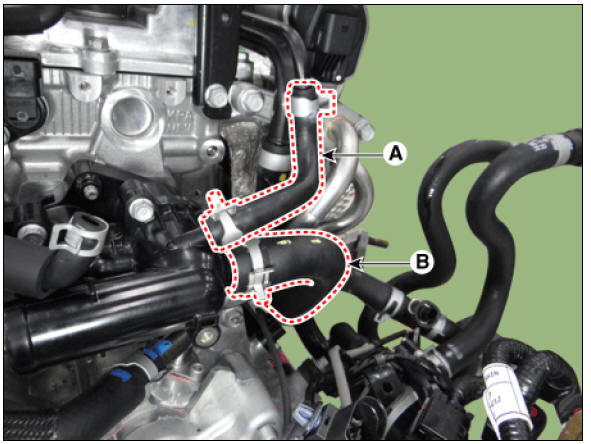
- Disconnect the oil cooler hose (A).
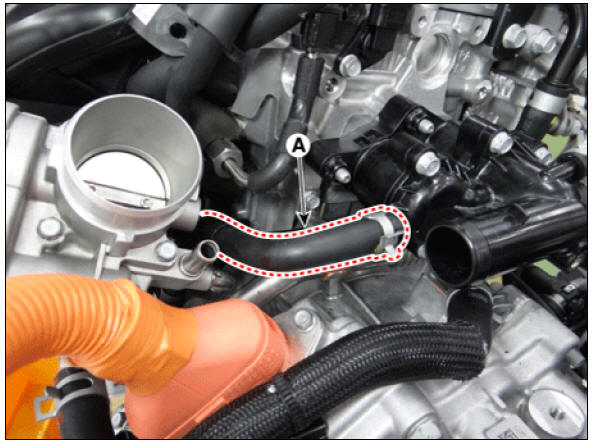
- Disconnect the water temperature sensor connector (A).
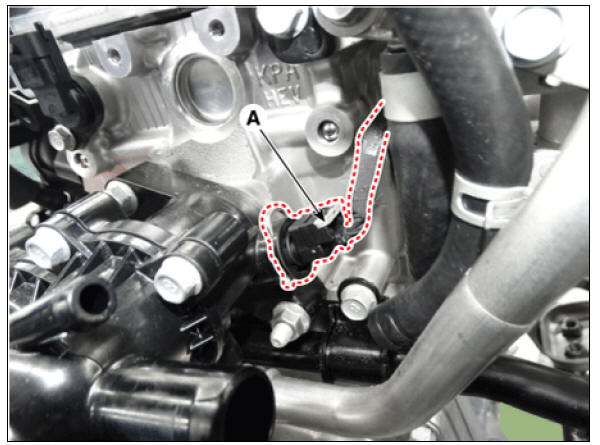
- Remove the water temperature control assembly (A).
Tightening torque : 18.6 - 23.5 N.m (1.9 - 2.4 kgf.m, 13.7 - 17.4 lb-ft)
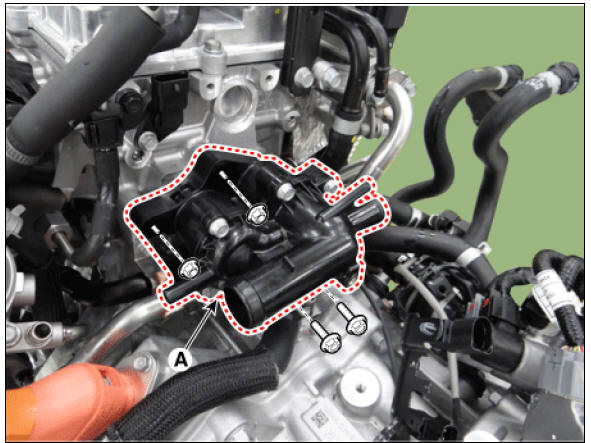
Warning
- When you use current-carrying bolts and nuts for the coolant temperature control assembly, use the specified bolts and nuts.
- Before mounting the coolant temperature control assembly, clean the contact surface.
- Before mounting the coolant temperature control assembly, make sure that the thermostat for separate cooling is not open or closed stuck due to foreign substance.
- Install in the reverse order of removal.
READ NEXT:
 Heater Pipe | Active Air Flap (AAF) Repair procedure
Heater Pipe | Active Air Flap (AAF) Repair procedure
Disconnect the battery negative terminal.
Loosen the drain plug, and drain the engine coolant. Remove the reservoir cap to help drain the coolant faster.
(Refer to Cooling System - "Coolant")
Remove
SEE MORE:
 Electrical Circuit Inspection Procedure
Electrical Circuit Inspection Procedure
Open Circuit Test
Procedures for Open Circuit
Continuity Check
Voltage Check
If an open circuit occurs (as seen in (FIG. 1)), it can be found by
performing Step 2 (Continuity Check Method) or Step 3
(Voltage Check Method) as shown b
 Instrument cluster (Kia NIRO Hybrid)
Instrument cluster (Kia NIRO Hybrid)
Type A
Type B
Tachometer/Power gauge
Tachometer
Indicates the approximate number of
engine revolutions per minute (rpm).
For type B, select Settings → Vehicle
→ Cluster → Tachometer display to
display tachometer based on
Categories
- Home
- KIA Niro EV, Hybrid - Second generation - (SG2) (2021-2024) - Owner's manual
- Kia Niro - First generation - (DE) (2017-2022) - Service and Repair Manual
- Contact Us
